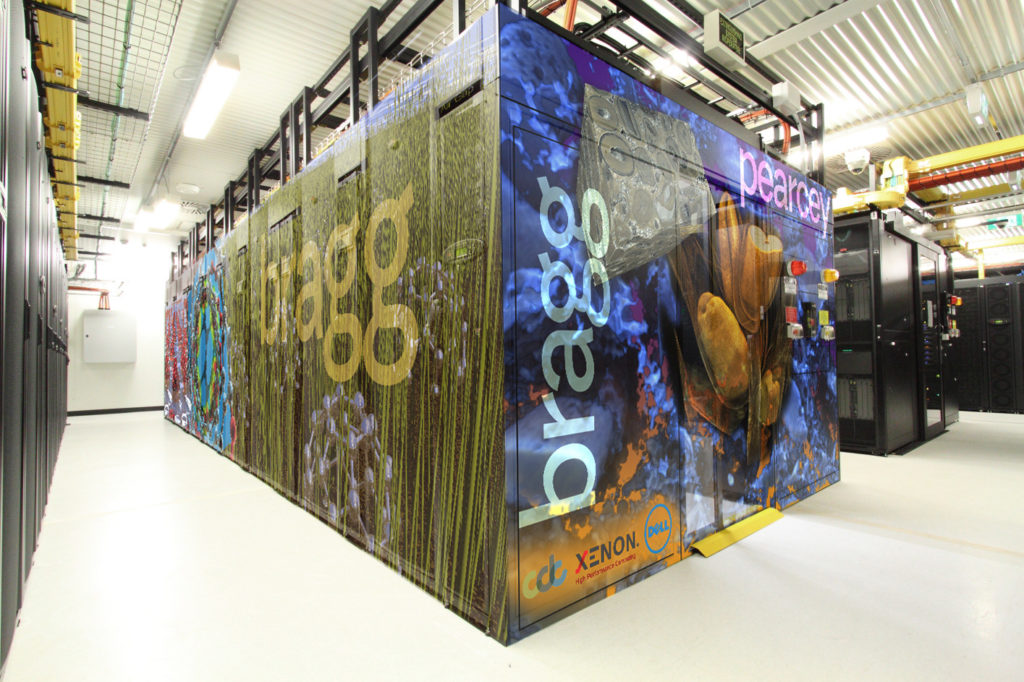Together with Dell we’ve developed a supercomputer capable of doing super science. Pearcey the computer is being applied directly at the intersection of medicine, modelling, and computer science — developing a semi-organic matrix to replace uterine tissue for women with post-child birth complications.
Our pelvis is home to some pretty vital organs: bladder, urethra, intestines, and rectum. These are held together by taut muscles in the pelvic floor, and any damage done to these muscles is bad news for the organs cradled therein.
One of the most extreme strains on the pelvic floor is child-birth. Under the immense pressure, the muscles can tear and one or more of the pelvic organs be forced into the only available space — the vagina. The result is a Pelvic Organ Prolapse and a wince-inducing onomatopoeic acronym.
One in ten women worldwide will suffer a pelvic organ prolapse (POP), and in Australia, one in five will require surgery. As it stands, the surgery is inadequate. Some treatments integrate synthetic meshes into the tissue, but this can result in infection and damage to the tissue wall. Up to one-third of POP surgeries can have complications.

A graph showing how an internal organ would deflect under loading (1) without support, and (2) how a mesh implant reduces such deflection.
Modelling results showing how an internal organ would deflect under loading (1) without support, and (2) how a mesh implant reduces such deflection.
We and researchers from the Monash Institute for Medical Research have been developing a new mesh. Our mesh uses a unique synthetic matrix coated in uterine cells native to the patient — this biological coating helps introduce the mesh into the natural tissue lining.
Though an improvement, this mesh is being developed to be universal for women worldwide and so must be able to flex and adapt to myriad women with myriad lifestyles. The mesh, made of custom polymers, must behave as human tissue.
We’ve used computer modelling to design the mesh, but designing a synthetic fabric that emulates the body at such a delicate scale, in every instance, requires immense numbers of calculations and analyses too great for typical computers.
Enter Dell
For the past three years we’ve been working closely with Dell in a unique collaboration to create a supercomputer, a high performance computer cluster (HPCC) to tackle some of our most data-burdened research challenges. It’s here…and its name is Pearcey.
Pearcey is available to our registered users for general application, and boy is it being used. We’re using the cluster to model fluid dynamics, materials science, and more.

Image showing a supercomputer in a large room with coloured walls.
Big and beautiful – the supercomputer Pearcey can help us to tackle calculations too complicated for regular computers.
Back to the POP predicament
With the immense task of developing synthetic tissue to imitate human tissue, our research team — featuring Dr. Dayalan Gunasegaram one of our computational modellers — and the Monash team have enlisted the help of Pearcey to crunch the otherwise uncrunchable numbers.
“Using the high performance computing capability of the Pearcey cluster we can simulate the stressful forces a patient would experience, such as during coughing or running, and model a variety of different situations to assess the mesh under stress,” said Dr. Gunasegaram.
“The computer simulations allow us to better understand the cause-and-effect relationships between mesh parameters, such as pore size and their expected in-vivo performance after implantation, and really focus on the areas with the most influence.”
Pearcey is a striking instance of powerful technology meshing with organic inquiry to solve real-world problems.
Angus Macoustra, executive manager of Scientific Computing at CSIRO explains,
“High performance computing facilities such as Pearcey are an integral part of the advanced information and communications technologies that enable us to solve real issues.”
To find out about our high performance computing capabilities you can view some case studies here.


Pingback: Oh the times they are a’changing – h.daw.son
13th June 2016 at 6:23 pm
Having one of these conditions I would be interested to know when the mesh will be available.
12th April 2016 at 5:28 am
WONDERFUL this will help so many. Interested to know WHEN and WHERE the new Mesh will be available to get help? Severe Incontinence is soul destroying AND EXPENSIVE.
13th April 2016 at 12:13 pm
Hi Gabrielle,
Thank you for your enquiry and interest in our work. We are working with universities and the Hudson Institute of Medical Research to develop new designs for better meshes. At this stage, we are validating the quality and performance of these meshes with our multi-disciplinary team. We are still in the Research and Development phase and are now seeking opportunities for industry support to take this to the next level.
Regards,
Ellen
CSIRO Social Media
11th April 2016 at 2:22 pm
Having had 3 prolapse operations during the 6 years we were having our children, obviously the original type of operation didn’t work not that I was ever told what it entailed, that was the 70’s though. What wonderful changes have evolved due to wonderful research.
30th March 2016 at 8:34 am
Great work on the modelling…now onto the laboratory studies! Such a debilitating and embarrassing condition that is not spoken of, but affects so many. Hope this goes all the way! Good luck!